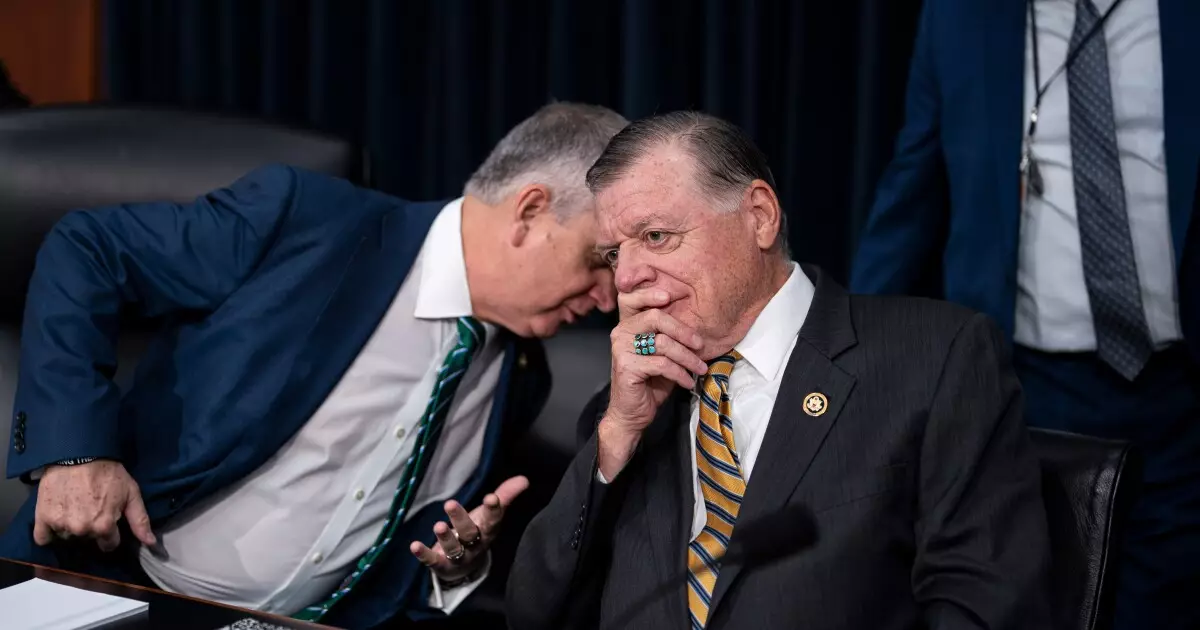As the 118th Congress nears its conclusion, lawmakers are gearing up for a crucial week that promises to be packed with legislative activity. With critical deadlines looming, including the expiration of the current government funding resolution on December 20th, Congress faces the urgent task of passing essential funding measures, as well as the National Defense Authorization Act (NDAA). These actions will shape not only the fiscal landscape for the incoming administration but also set the tone for government operations in the forthcoming year.
Brett Bolton, vice president of federal legislative and regulatory policy at the Bond Dealers of America, underscored the significance of this lame-duck session, indicating that while the focus may not align with the priorities of the municipal market, the outcomes will provide key insights. How effectively Congress maneuvers through the must-pass legislation could ultimately determine the trajectory of tax reforms and broader fiscal policies anticipated in 2025.
The uncertainty surrounding the next government funding bill adds a layer of complexity to the legislative process. Lawmakers will need to reconcile competing priorities while addressing a budget that has yet to see bipartisan agreement on the overall spending cap. Speaker of the House, Mike Johnson, R-La., has indicated a desire to pursue a short-term continuing resolution that extends funding through February or March of 2025. This approach aims to defer deeper budget discussions until the new administration takes office, potentially allowing President-elect Donald Trump to influence spending priorities.
Additionally, as the deadline for passing a comprehensive budget looms in April 2025, Congress could face the specter of automatic sequestration cuts if they fail to reach an agreement. This scenario underscores the critical nature of negotiations in the coming days, not just as a stop-gap measure, but as a foundational step toward long-term fiscal stability.
In a notable display of cooperation, bipartisan support for disaster aid had emerged prior to the Senate Appropriations Committee’s hearing on November 20. House Appropriations Chair, Rep. Tom Cole, R-Okla., indicated that provisions for disaster funding may be included in the upcoming stopgap funding bill. This consensus highlights the urgent need for effective disaster relief as communities across the nation grapple with the aftermath of natural calamities.
While partisan divides often grip Congress, this case reflects an understanding of the necessity for immediate assistance, suggesting that lawmakers prioritize the welfare of their constituents, even amidst the pressures of budget negotiations and partisan strategies.
As Congress prepares to pass the NDAA, it will mark the 60th consecutive year of supporting national defense initiatives. However, this year may diverge from recent trends, as the NDAA will likely not incorporate significant new legislation. In contrast to the 2022 NDAA, which introduced the Financial Data Transparency Act—impacting municipal bond issuance—this year’s version is anticipated to maintain a more conventional approach, focusing primarily on necessary reauthorizations without sweeping reforms.
While the bill’s text is poised for release next week, observers expect it to be largely uncontentious, keeping the military funding wheel turning while deferring more substantial changes for the next Congress.
Looking ahead, the Republican agenda after Trump’s inauguration promises to be aggressive, particularly concerning infrastructure spending. Senator Jodi Ernst, R-Iowa, has already suggested significant cuts amounting to over $2 trillion, targeting specific projects initiated under the Infrastructure Investment and Jobs Act. Ernst’s recommendations reveal a strong sentiment among Republicans to reassess previously allocated funding, particularly for programs deemed inefficient.
Her remarks about the lagging rollout of electric vehicle charging stations and high-profile California rail projects underline growing skepticism about federal investments that do not yield tangible results swiftly. Ernst’s focus on eliminating programs appears indicative of a broader shift in the party’s stance toward fiscal conservatism, potentially shaping the contours of infrastructure policy moving forward.
As Congress undertakes this final stretch of its term, the decisions made—regarding government funding, national defense, and disaster relief—will likely delineate the shifting policies of the new administration. The ability of lawmakers to collaborate across party lines remains crucial in navigating these pressing matters. The coming week offers a glimpse into the legislative priorities that may shape governmental operations and priorities in the years to come.

